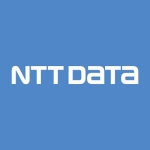What is our primary use case?
As a company in the insurance industry, we use it for various functions within finance, such as identifying duplicate invoices, reporting, some operations functions - moving information from one system to another - as well as claims-processing.
How has it helped my organization?
Kryon has saved us a bunch of money and time. Specifically, it sends reminders out for claims that have not been actioned after a set period of time; for example, dormant claims, which haven't been updated or touched in five years. We actually created a job to send out reminders to the brokers to try to get updates. Since then, we've been able to close numerous claims and therefore reduce our reserves by literally millions of dollars.
It has provided overall money savings and overall time savings. We've got dashboards that show our overall stats from all our jobs. So we can say robotics has saved X amount to date, Y hours per department. Some of the jobs measure finances. There are literally hundreds of hours and millions of dollars in savings.
The solution has also increased operational efficiency. The percentage varies per department, but there are some departments that are saving two hours a day of people's time, so that's quite significant. If you think about an eight-hour day, that's 25 percent for a department which is already stretched thin. Time is extremely valuable when resources are slim.
We have also seen a reduction in employee errors. One of our jobs for finance looks for potential duplicate invoices. There were instances in the past where duplicate invoices were sent out, bills were paid twice, etc. It has dramatically reduced that. I don't think we've had one since we implemented the job. The automation searches for anything that looks similar in specific fields, using search criteria, and then produces an exception report. Instead of having someone go through 10,000 lines in a spreadsheet, they then have about 50 lines to compare. Obviously, it's much easier to identify duplicates in 50 lines as opposed to 10,000.
Finally, Kryon has helped our existing workforce embrace the digital transformation of our company. There is, obviously, resistance to change no matter where you go. Certain people will respond differently. But overall, the response has been really supportive and positive, especially from management. They're very happy with the way things are developing, the way time has been freed up. Most of the developers, and most of the people who use the automation, are also happy. There are only one or two people who feel a little threatened by it still. They don't really voice it. It's just that you can sense the resistance. I think it's a fear of their jobs going away. In our case, there's enough work that people just need to be repurposed and do other work. There's more than enough work for everybody. It was never one of our objectives to eliminate full-time employees.
What is most valuable?
The recording capability is valuable because of the amount of data it captures automatically. It's quite good. It means less development, and fewer configuration settings to fill in after you're done.
It's quite easy to use, end-to-end, minus the Process Discovery piece. The ease of use is probably the best part about it. For developers, the program is very user-friendly.
What needs improvement?
Process Discovery currently is not working for us. It's not giving correct information, correct stats. It's an issue that is currently open with Kryon as a ticket that they are investigating. In our instance, it did not function as advertised. As a result, business analyst hours haven't factored in because Process Discovery is generally the piece that's supposed to save business analyst time. As of right now, we've saved no time in that area.
Also, troubleshooting and debugging could be improved. It's missing a proper debugger. It's very difficult, based on the log files and the fact that it doesn't have a proper debugger, to troubleshoot issues. It will sometimes end with no indication as to why it ended and it becomes a bit of trial and error. Obviously, that is not a great use of time. If there were better debugging tools and logging, we'd be able to find the issues more quickly and fix them more quickly.
For how long have I used the solution?
We've been using Kryon for a little under two years.
What do I think about the stability of the solution?
Right now we're having issues, so you've caught me at a bad time. Once you get it in and working, it's quite stable. Part of the problem goes back to the development. Our biggest frustration at the moment is the time to develop, because we are doing a lot of trial and error. It goes back to that debugging and lack of logs. It takes quite a while at this time, longer than we would like, to move a job or prepare it for production. Once it's done and in production, it's very stable. It's the development part that is the problem. Once in production, it is really stable.
What do I think about the scalability of the solution?
We are a small company, so we haven't really scaled that much. We have about five departments using it and we have under 25 jobs. We're not that large at all.
In terms of creating new automations, implementing new robots, we haven't seen any issues at all. It's very simple to scale. Creating a new job, adding new robots, are both very easy to do.
All our bots are unattended, so very few people actually "use" Kryon in our company. We have approximately seven or eight developers in total during different periods of the year. Some are more active than others. For example, in finance, when it comes to quarter-end, they don't really develop. They leave the automation alone for a couple months while they take care of their busy time of the year. It comes in waves.
We have five robots in production currently. As of now, we have no plans for increasing. We've got lots of time to add stuff.
How are customer service and technical support?
The support is really good.
Their first-level support needs a bit of work. If we put in tickets, very often we get a bunch of questions from level-one but that information was already in the ticket. We get repeat questions.
The only complaint I have, if you want to call it that, is that I would like to be able to pick up the phone and call someone. If we enter a ticket, by the time someone replies to it, we have continued working on our issue. The job has often changed, the situation's changed, or the issue may be resolved by the time someone replies a day or two later. Being able to pick up that phone and talk to someone immediately would be a tremendous benefit.
They don't have an extra level of support that you can purchase. There is just our client manager. If we have issues that support is not addressing quickly enough, we just escalate and then they take care of it from their side. They get someone to get in touch with us. But it would be nice to be able to pick up the phone and not even have to enter a ticket. Half of our questions could be answered immediately if we talked to someone directly, as opposed to going back and forth via email. Once it's an email, it's stretching out from a five-minute phone call to three days later before we get the end answer. I'll ask a question; they'll ask a question in reply. It goes back and forth in an email exchange.
There's no live support available unless we pick up the phone and call someone directly, but for that there's no support desk. I'd be calling our client representative who's really a sales guy. He's not a tech support guy. He would follow up with someone in tech support to get in touch with us.
Which solution did I use previously and why did I switch?
With this client, there was no other solution in use. I use some, myself, as a consultant with other clients. I've been here for the last almost two years. Prior to that, I used Cherwell which is more like an IT service management, workflow-type tool.
How was the initial setup?
The setup was very straightforward. Kryon dialed in remotely and did most of the work, along with our infrastructure guys. There were no issues there. It was really smooth.
They did it in sync with our guys. We had someone with the proper access and rights, so if they needed to do something on the server, for example, we had an engineer with admin rights on the call and able to assist them remotely. They worked closely with our lead engineer for IT to get it in and there were no issues at all.
The installation itself was just hours, literally. It was really quick.
It's the same with upgrades. Upgrades are very smooth and they don't take very much time at all. Kryon staff do the updates as well.
As far as the installation of application goes, there was no strategy. We just followed the steps in order.
Where implementation of robotics as a program is concerned, the strategy was to get some low-hanging fruit, some easy jobs with high ROI, and try and to show success. With that success, we rolled it into buy-in from the rest of the teams. Something else we did as a strategy was that we put a developer in each one of the departments, so it wasn't someone from IT doing the development, it was actually business-users. That way, people's peers would be designing, implementing, and developing whatever is being used in their departments. We got the subject-matter experts to actually design their own jobs. They chose what to automate, when to automate it, and then they would automate it themselves. It wasn't "Big Brother" pushing things on people. What they wanted to automate, and when they wanted to automate it was determined within the department. That created a better buy-in for implementing change and for change-acceptance in departments.
People always have their backs up against the wall if it's someone forcing something on them: "Oh, now you have to use this application." The response is often, "Well, I don't want to."
This way, it was them and their peers deciding what they were going to automate. It was much easier to get their buy-in. They determined as a group what they wanted to automate. It created a better culture for change-acceptance.
Which other solutions did I evaluate?
Automation Anywhere was the other one they were considering. I think they looked at a couple of others, but that was before I was here. I saw the paperwork comparing the final two and they were Kryon and Automation Anywhere.
What other advice do I have?
You do need someone with some development knowledge. Not necessarily everybody involved has to know development, but as a resource, it would definitely be important to have. A straight business-user who isn't strong in IT or development wouldn't be able to do half the things that we've done. Having someone with a development background, at the very least as a support person, internally, is tremendously valuable.
As for saving time when launching new automations, we don't have anything to compare with because we didn't have an automation solution beforehand. It's new to the company. I would say our developers have gotten more proficient, so we've become quicker at development. As far as the launching now, though, it all takes about the same amount of time.
Regarding business users, with no technical background, it definitely can be used. We have users of all levels of technical skill. Business users can create some basic jobs, but there are some limitations to the product. More technical users can get around the limitations using scripting with JavaScript and the like. If people are familiar with that, it definitely makes the development phase much easier. It's totally possible for business users to use it. We've had users who have done basic jobs, but when it gets to more advanced things or quicker ways of doing things, a little bit of development knowledge goes a long way.
For deployment, maintenance, or upgrades of Kryon, there are two of us. I'm involved in coordinating and our lead IT guy works with whomever they assigned from Kryon. I'm not even necessary for those tasks. Really, just one person is required. I do the change request. I take care of the bureaucracy and the red-tape approvals and the like. Once all that's done, we hand it off to the technical team and there's a single person that does it all. He is the IT lead. As needed, he'll pull in DBAs or whoever, if the situation calls for it. He coordinates with his team.
Disclosure: PeerSpot contacted the reviewer to collect the review and to validate authenticity. The reviewer was referred by the vendor, but the review is not subject to editing or approval by the vendor.














